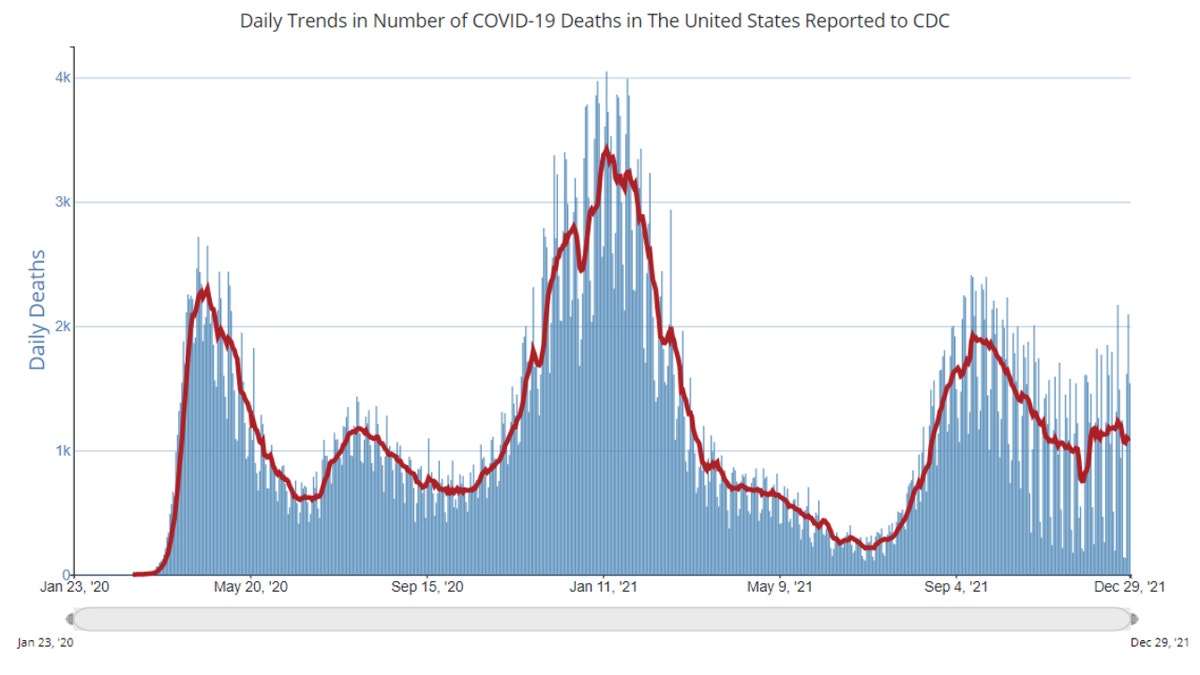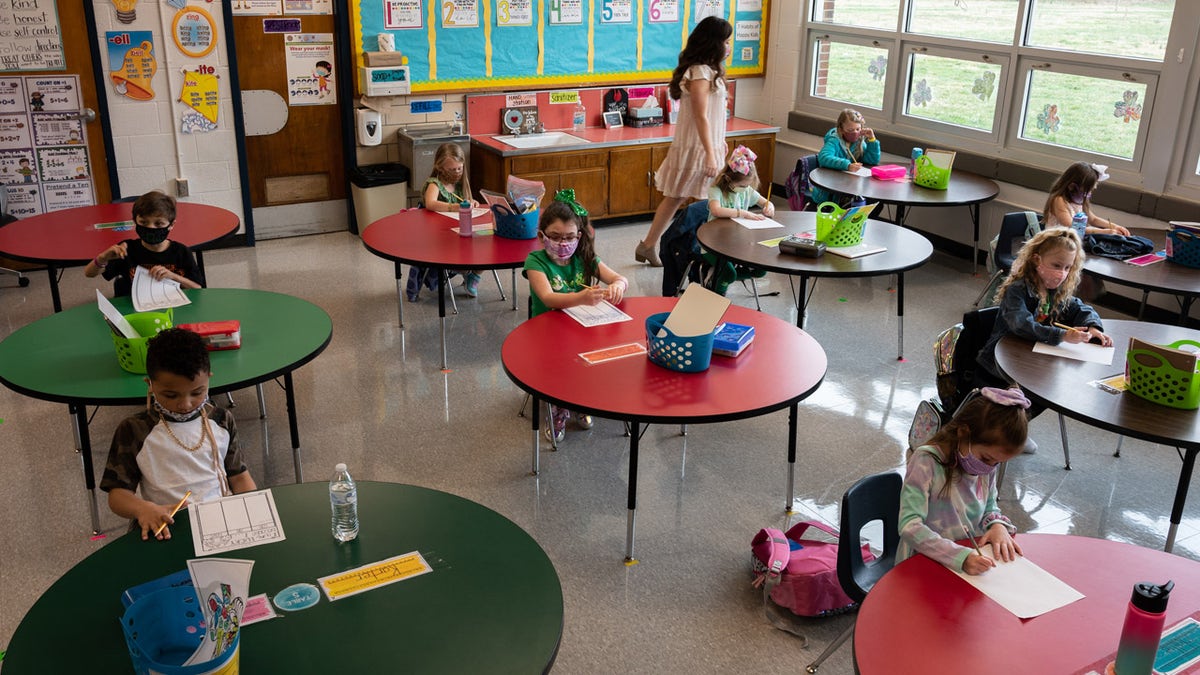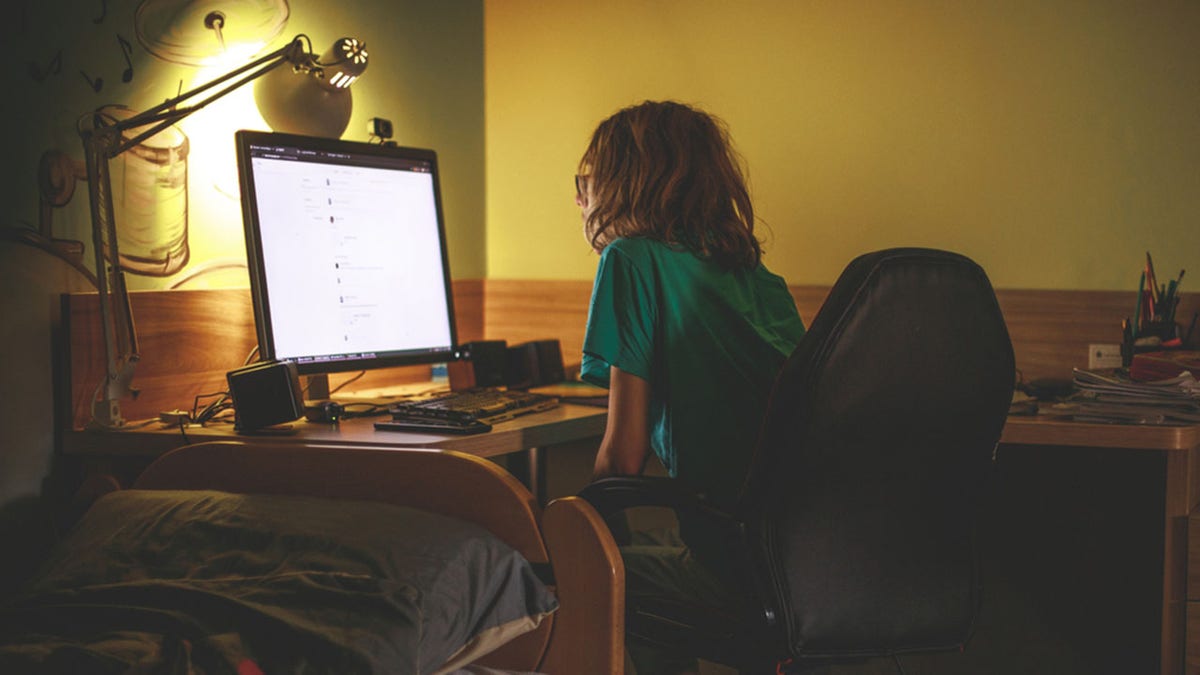Former CDC Director Redfield: We have to keep schools open
Dr. Robert Redfield warns of the harm of school closures and argues the U.S. needs to move forward through the COVID-19 pandemic with the help of adequate testing.
Public school districts, mostly across the Northeast and Midwest, closed this week as the omicron variant of coronavirus surges following the winter break and the country's students face a mental health crisis.
Various school systems in Wisconsin, Michigan, Ohio, New Jersey, Connecticut, Massachusetts, Pennsylvania, Maryland and other states have delayed reopenings after winter break, citing COVID-19 concerns and related staffing shortages. More than 3,200 schools are closed this week, according to a public school opening tracker from community event website Burbio.
Members of the Chicago Teachers Union are holding a vote Tuesday – a day after reopening – to return to remote learning for two weeks if their demands for a large increase in COVID-19 testing for all students to go back to school are not met.
TEACHERS UNIONS ACROSS THE COUNTRY CITE COVID SURGE TO DEMAND HALT TO IN-PERSON LEARNING
"What I'm hearing from parents is that it's a flashback to the beginning of 2021, and they're ready to challenge this," Laura Zorc, director of Education Reform at Building Education for Students Together (BEST), told Fox News. "…Based on the science, we know that the mental health of children and the learning loss is greater than the risk of COVID."

Chicago Teachers Union members display signs ahead of a car caravan where teachers and supporters demanded a safe and equitable return to in-person learning during the COVID-19 pandemic in Chicago, Illinois, on Dec. 12, 2020. (Max Herman/NurPhoto via Getty Images)
Randi Weingarten, president of the American Federation of Teachers – the largest teachers union in the U.S. – said in a Tuesday tweet that schools are making "very real logistical decisions."
FAUCI, TEACHERS UNIONS AT ODDS OVER REOPENING SCHOOLS
"We know kids do better in person, but the spike is real. We need adequate staff & the safety measures in place including testing, masking ventilation. There is a lot of stress," she wrote.
President Biden's American Rescue Plan COVID-19 relief package allocated $122 billion toward helping K-12 public schools deal with the coronavirus pandemic, but despite the massive increase in funding, teachers union members remain concerned about a lack of COVID-19 tests and personal protective equipment, as well as outdated ventilation systems.
"It all goes back to the politics of negotiating union contracts, so they're using our children as a pawn in their negotiations," Zorc said, adding that other essential workers such as police officers, grocery store workers and truck drivers can't negotiate their contracts by involving children.
COVID-19 SPREAD IN THE US: HOW OMICRON IMPACTS EACH STATE BY POPULATION
In a speech Tuesday, Biden said it is safe for children to attend in-person school, citing the American Rescue Plan's funding.
"We know that our kids can be safe when in school, by the way. That's why I believe schools should remain open. You know, they have what they need because of the American Rescue Plan or the first month we were in office or second month that I signed in March. We provided the states with $130 billion, with a billion dollars to specifically keep our students safe and schools open."
While cases have spiked, deaths from the disease have fallen by more than half. Jan. 13, 2021, saw the greatest number of COVID-related deaths since the pandemic began with nearly 4,050 deaths reported that day. The seven-day average hovered around 3,400 deaths per day. But as of Dec. 29, the last time the Centers for Disease Control and Prevention (CDC) updated its trending data, the nationwide average was reported at just under 1,100 deaths per day.

COVID-19 deaths (CDC)
The delays come as U.S. Surgeon General Dr. Vivek Murthy, as well as the American Academy of Pediatrics, American Academy of Child and Adolescent Psychiatry and Children’s Hospital Association, declared a "national emergency" or "crisis" in child and adolescent mental health in the U.S.
"It's a huge concern," Dr. Sara Bode, a member of the AAP Council on School Health, said of returning to remote learning. "Kids have been through a lot. What I can tell you through my experiences in schools is that when schools got back to in-person learning, it wasn't so quick and easy for kids to adjust. They had been out for a long period of time. It took weeks for schools to get back to their routines and positive culture and climate, and now, with another set of disruptions, it [will] just set things back even further."
Schools switching to remote learning after winter break should think about how quickly they can return to in-person learning, she said. For children, specifically, Bode believes schools making an effort to mitigate the transmission of COVID-19 are some of the safest places for children to be right now compared to places in their communities that do not have mitigation strategies in place.
"Of course, it's not zero-risk to have kids in school. … With this increase in transmissibility, we will likely see an increase in cases in schools, but it's likely not higher risk than many of the other activities kids participate in when they're not in school," she said.

A teacher walks among masked students in a socially distanced classroom at Medora Elementary School on March 17, 2021, in Louisville, Kentucky. (Jon Cherry/Getty Images)
While some young people got more sleep, exercise and positive family time at home during the pandemic, others suffered, the surgeon general's notice stated. Early estimates for 2020 show more than 6,600 suicide deaths among U.S. youth ages 10 to 24, according to the CDC.
Emergency room visits for suicide attempts among adolescent girls, in particular, rose by 51% during the pandemic and emergency room (ER) visits among adolescent boys increased by 4% during the same time period.
CHICAGO TEACHERS UNION LEADER UNDER FIRE FOR PUSHING REMOTE SCHOOLING WHILE VACATION IN CARIBBEA
"We have definitely still seen a persistent increase in kids at all levels of mental health crisis, [including] those who are needing to go into the hospital or go to the emergency room due to an acute mental health crisis or suicide attempts or thoughts, down to a large number of students that are seeking counseling for mental health concerns," Bode said.
AAP is focused on "prioritizing in-person learning and using the available mitigation strategies" that work to prevent the spread of COVID-19, Bode explained. With those measures in place, the organization still recommends schools remain in-person even throughout the omicron surge.
"We're saying that because we realize just how critical it is for schools to be in-person learning. Part of that is … their mental health, social, emotional health. What it means for their academics. We believe school is an essential service," she said.

Teenage student learning in his bedroom during COVID-19. (iStock)
Students are faring worse academically after two years of the pandemic and related learning complications, according to a July study from NWEA, a research nonprofit. The report found that students were struggling more academically "by the end of the 2020-21 school year compared to what we first reported in the fall."
While students' reading comprehension improved slightly in the beginning of COVID-19, it declined into 2021. Students' math comprehension has been decreasing since 2020; NWEA found that "math achievement fell even further behind historical trends – the difference of 5 to 10 percentile points in fall of 2020 widened to a difference of 8 to 12 percentile points in spring of 2021."
The pandemic also exacerbated inequalities among minority students, who were "less likely to be learning in person and more likely to encounter obstacles in accessing instruction compared to White students," according to NWEA.
"I really worry that prolonged closures are going to have a huge detriment," Bode said. "…Kids that are most likely affected first are kids that attend more large, urban school districts, as an example, which are also often families that come from a lower socioeconomic status and may have had some challenges with remote learning, and so we're just widening the gap."
CLICK HERE TO GET THE FOX NEWS APP
Zorc said teachers – as opposed to teachers unions – "want to get back into schools because they are the ones in the classrooms right now having to deal with the learning loss that these children are suffering from."
A January 2021 report from CDC researchers published in the Journal of the American Medical Association (JAMA) noted that as schools reopened for in-person instruction, "school-related cases of COVID-19 have been reported, but there has been little evidence that schools have contributed meaningfully to increased community transmission."
Some parents are frustrated with the return to closures nearly two years into the pandemic.
"This is no way for children to grow up," Jackie Irwin of Oklahoma told The New York Times. "It is maddening."
"For so many kids, school represents a safe, comfortable, reliable place, but not for nearly two years now," Lisa Durstin of Vermont told the outlet.
Fox News' Caitlin McFall contributed to this report.


